The Khafre scan scam, a bold claim of a hidden underground city beneath the Khafre Pyramid, swept online communities in March 2025 before collapsing under scrutiny. Greg Reese ignited the story on March 18th, describing 648-meter wells, 80-meter cubic chambers, and a 2-kilometer deep network beneath Giza’s second-largest pyramid. A March 19th press release on the “Occultum” Substack, complete with dazzling 3D renderings, fanned the flames into a viral sensation.
We now know Researchers Corrado Malanga and Filippo Biondi crafted this tale: they authored the release and produced the scans, not merely contributing but driving the narrative. Science dismantles their claims; the limits of Synthetic Aperture Radar (SAR), Giza’s proven research record, and Egypt’s stern rejection expose a fraud. This article lays out the evidence, step by step, proving this is no discovery: it’s a sham, unworthy of Giza’s legacy.
Malanga and Biondi: A Fringe Duo’s Bold Gambit

Corrado Malanga carries a reputation for fringe ideas. He worked as a chemist at the University of Pisa, but his current ties there remain uncertain as of March 2025. His past brims with wild theories: UFO abductions, pyramids as ancient machines. Filippo Biondi, once a radar specialist at the University of Strathclyde, no longer holds that affiliation; his status clouds further. Together, they entered the spotlight with a 2022 Remote Sensing paper. That study used SAR Doppler Tomography, claiming micro-movements from seismic waves mapped Khufu’s interior. Experts raised doubts then, questioning the leap from surface to depth.
The Khafre scan scam marks their boldest move. The “Occultum” release, under their names, details five multi-level structures, eight deep wells, and two massive chambers beneath Khafre: all allegedly revealed by COSMO-SkyMed SAR data. Stunning renderings accompany the claims, so polished that some on X suspect AI generation, not raw output. Their Khufu work suggested modest finds; this jumps to a subterranean metropolis. They own this narrative fully, a gambit that stretches credulity beyond breaking.
Khufu Revisited: A Questionable Foundation for the Khafre Scan Scam
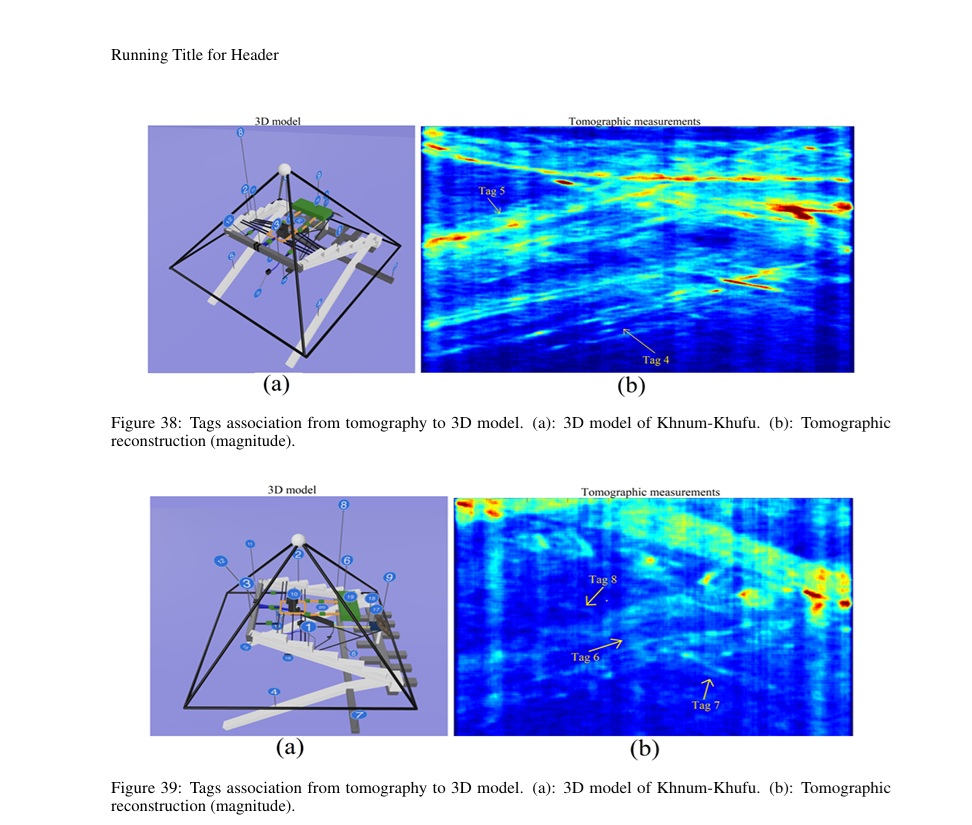
REVEALS DETAILS OF UNDISCOVERED HIGH-RESOLUTION
INTERNAL STRUCTURE OF THE GREAT PYRAMID OF GIZA
To grasp the Khafre scan scam, consider their 2022 Khufu study: it’s a cornerstone now cracking under review. Malanga and Biondi used COSMO-SkyMed’s X-band radar, asserting micro-movements unveiled internal features: voids, ramps, passages. Their method relied on Doppler shifts and custom software, suggesting satellite data could pierce stone. Published in Remote Sensing, it sounded impressive. Yet, doubts lingered; how could surface vibrations map a pyramid’s depths? Hindsight, paired with better science, reveals the flaws.
Muon Scans Expose the Khafre Pyramid Fraud’s Roots

The ScanPyramids project (official site still down) offers a reality check. From 2015 to 2017, it deployed muon detectors: devices tracking cosmic particles that penetrate dense stone. In 2017, they confirmed a “Big Void” above Khufu’s Grand Gallery, about 30 meters long, validated by years of data. Muons shine where radar falters; they map density through hundreds of meters. Malanga and Biondi’s voids don’t match: no Big Void in their findings, just different anomalies. X-band SAR scatters within centimeters in limestone, unlike muons’ deep reach. Their claims lack alignment with this benchmark, hinting at misread data or inflated scope: a shaky start for the Khafre pyramid fraud.
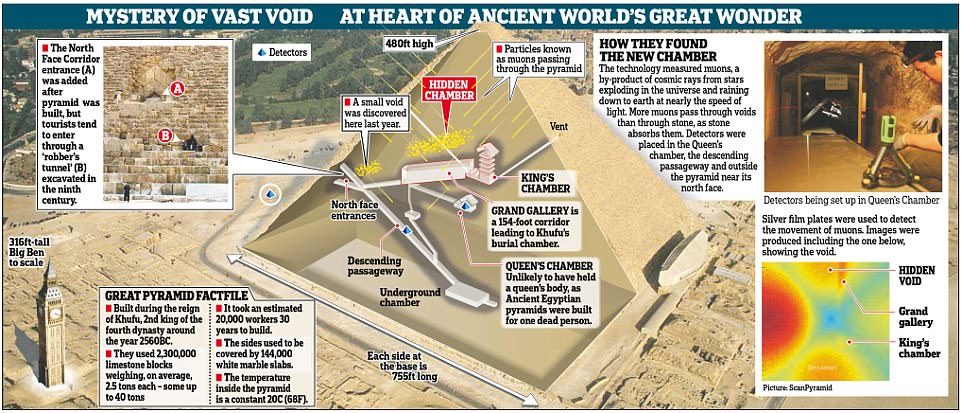
This mismatch isn’t trivial. If SAR truly saw inside Khufu, some echo of the muon results should appear. Instead, their 2022 study stands apart, unverified by proven tools. The Khafre scan scam builds on this: same method, grander claims. The pattern emerges: a technique promising more than it delivers, setting the stage for a bigger lie. Science demands consistency; their work offers none.
ScanPyramids Confirmed a Chamber Above Khufu’s Entrance
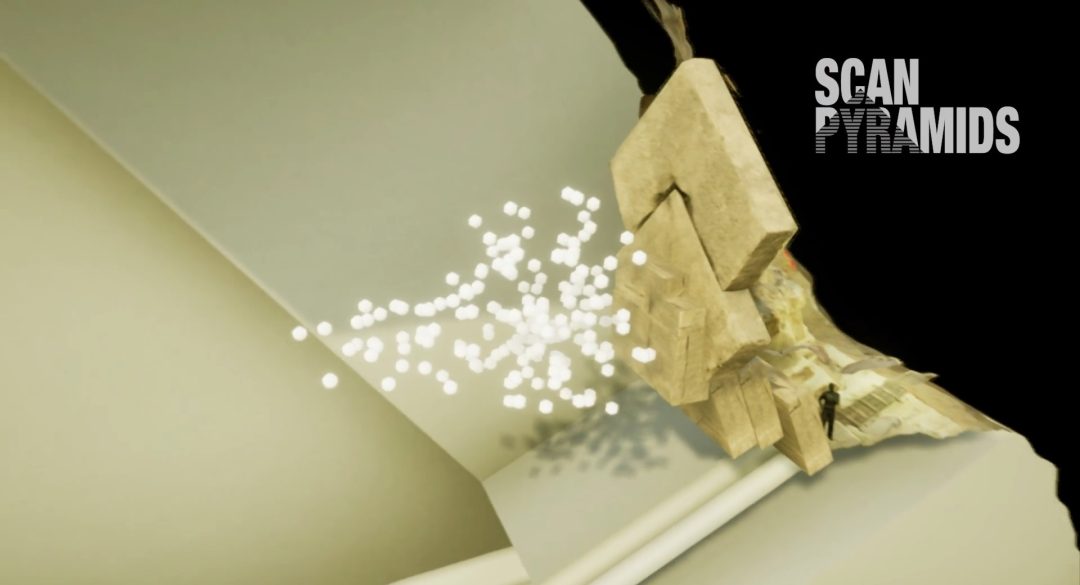
The ScanPyramids project delivered a breakthrough in 2023, confirming a hidden chamber above the main entrance of the Great Pyramid of Khufu: a discovery that underscores the power of rigorous science over the Khafre scan scam. Using muon detectors, which track cosmic particles penetrating dense stone, the team first detected anomalies in 2016 near the pyramid’s north face. These devices, placed in strategic locations like the Queen’s Chamber, captured subtle shifts in muon flux: signs of a void. By 2023, advanced imaging and endoscopic probes verified the find, revealing a corridor-like space, roughly 9 meters long and 2 meters wide, just behind the chevron stones above the entrance. The Egyptian Ministry of Antiquities hailed it as a “significant step” in understanding Khufu’s design, announced in a March 2nd press conference.
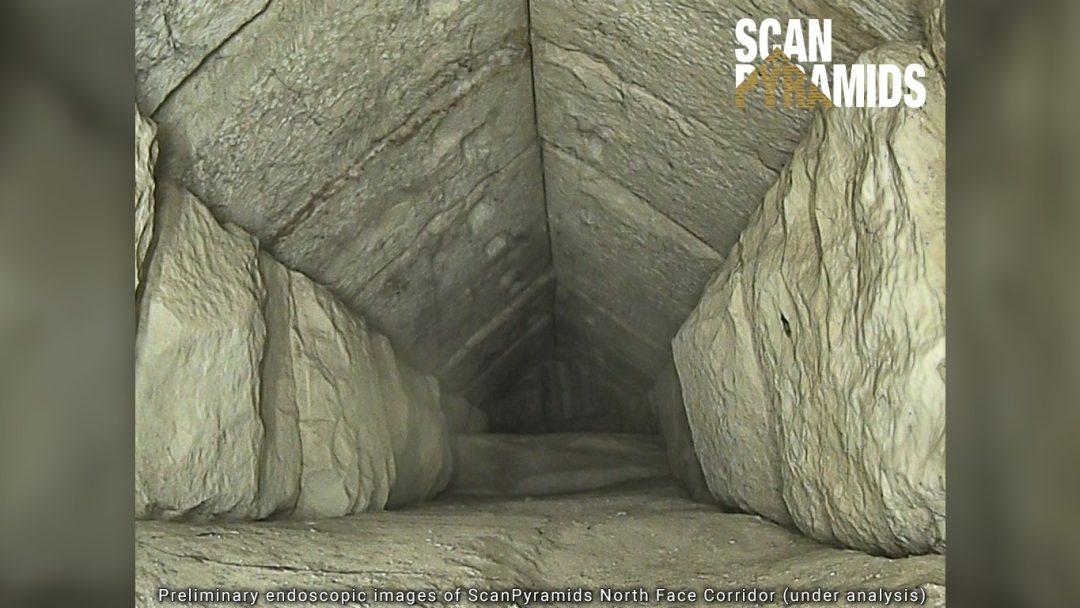
This chamber, dubbed the “North Face Corridor,” contrasts sharply with the Khafre pyramid claims. ScanPyramids relied on years of data, cross-checked by international experts: a methodical approach Malanga and Biondi sidestepped. Muons pierce hundreds of meters of limestone, mapping density with precision. The discovery builds on the 2017 Big Void find, reinforcing a pattern of modest, verifiable spaces in Khufu: no sprawling complexes, just architectural secrets unveiled through patience. Unlike the unconfirmed 648-meter wells of the Khafre scan scam, this chamber stands as fact, grounded in technology and transparency, not speculation or glossy renderings.
SAR’s Unyielding Limits Debunk the Khafre Scan Scam
The Khafre scan scam hinges on SAR Doppler Tomography, stretched to absurdity. COSMO-SkyMed’s X-band SAR excels at surface tasks: mapping land, tracking quakes. Its interferometry detects millimeter shifts, a marvel for shallow work. Malanga and Biondi claim it goes deeper; seismic micro-movements on Khafre’s surface, they say, yield 3D images penetrating 648 meters. Their software supposedly turns radar into “phononic information,” unveiling hidden worlds. Physics disagrees.
Radar’s reach depends on wavelength and material. X-band’s 3.1 cm waves hit Khafre’s limestone and granite, stopping within centimeters or meters: not hundreds of meters, not kilometers. GPR at 200 MHz probes tens of meters, still far from their depths. Lawrence Conyers, a University of Denver radar expert, states it clearly: “SAR stays at the surface; it can’t see through rock that far, period.” Seismic vibrations might ripple outward, detectable by SAR, but that’s where it ends: surface echoes, not internal blueprints.
True tomography, think medical CT or seismic surveys, needs waves crossing a medium, measured from many angles. SAR, from orbit, gets one view: the top. Their software can’t bridge that gap; no physics supports it. The 648-meter wells, the massive chambers: these exceed SAR’s grasp. The Khafre scan scam rests on a fantasy, not a breakthrough. Either they misjudged their data, or they crafted a tale beyond reason.
Giza’s True Storytellers Refute the Khafre Scan Scam
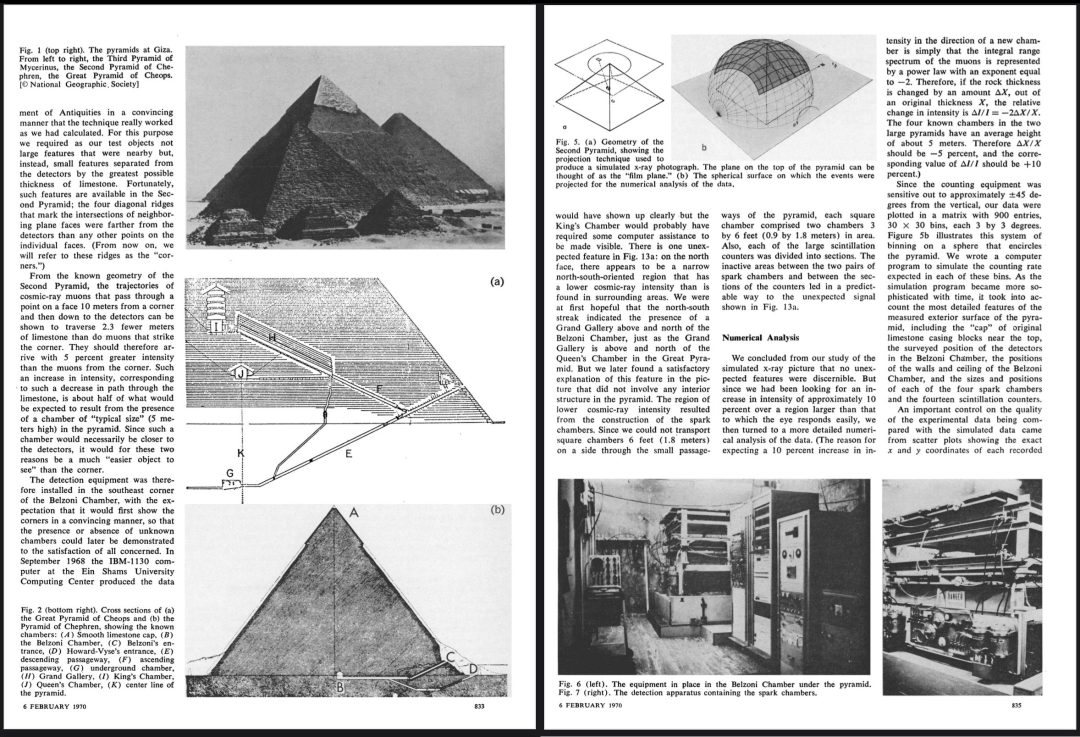
in the Pyramids
Giza’s research history exposes the Khafre pyramid fraud. In 1965, Luis Alvarez used cosmic-ray detectors in Khufu’s Belzoni Chamber, seeking hidden spaces. His team found none, a baseline later refined. From 2021 to 2023, a Japanese-Egyptian GPR study near Khufu uncovered a 6.5-foot deep L-shaped anomaly: subtle, verifiable. ScanPyramids’ muon work revealed the Big Void and a corridor: concrete finds, not fantasies.
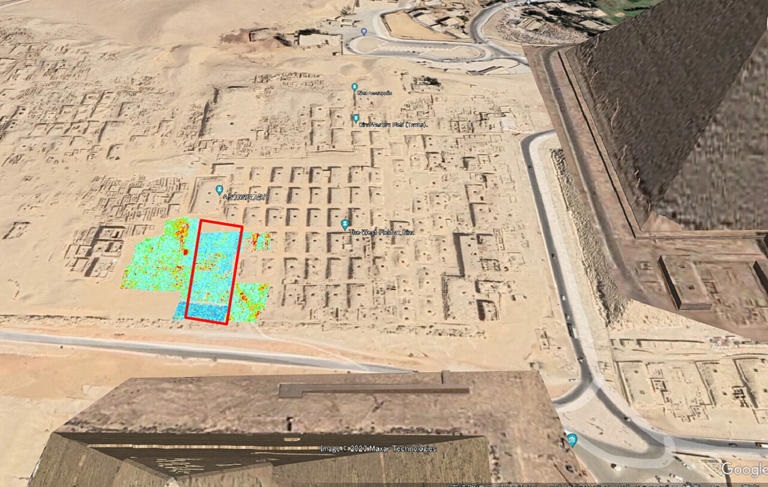
These studies build a picture: Giza yields secrets slowly, in small doses. Alvarez saw no chambers; GPR found shallow traces; muons confirmed voids. Malanga and Biondi’s Khafre vision, kilometer-deep wells, city-sized rooms, has no home here. Their 2022 Khufu claims, already dubious, find no support; Khafre’s excess finds less. Real science carves truth from stone; their scam piles fiction atop it.
Egypt’s Uncompromising Stand Against the Khafre Scan Scam
Egypt’s authorities bury the Khafre scan scam with force. Dr. Zahi Hawass, former Antiquities Minister and Giza’s defender, spoke on March 23, 2025, in The National: “This is completely wrong, fake news.” He added, “No radar devices or modern technologies have detected anything beneath Khafre.” In Ahram Online, he called it an attack on Egypt’s heritage, tossing it to “the dustbin of history.”
Dr. Hussein Abdel-Basir, Director of the Antiquities Museum at Bibliotheca Alexandrina, told Asharq Al-Awsat: “It’s exaggeration and deception, no science here.” The Supreme Council of Antiquities stays mute: no scans approved, no digs planned. Egypt’s pattern holds: bold claims meet swift rejection. The Khafre pyramid fraud lacks their sanction, a fatal blow.
Alternative Skepticism
Christopher Dunn, known for his book The Giza Power Plant, has long argued that the Giza pyramids served as sophisticated energy devices. While his theories might seem to align with Malanga and Biondi’s claims of a vast underground complex beneath Khafre, Dunn has publicly distanced himself from their conclusions. In a March 2025 statement on his website, he dismissed the SAR-based findings as “speculative overreach”. Dunn insists that his own evidence—based on acoustic resonance and precision engineering, requires physical inspection. Not remote sensing prone to exaggeration. For him, the Khafre pyramid fraud undermines legitimate alternative research by leaning on unverified tech and sensational renderings, diluting the case for rethinking Giza’s purpose.
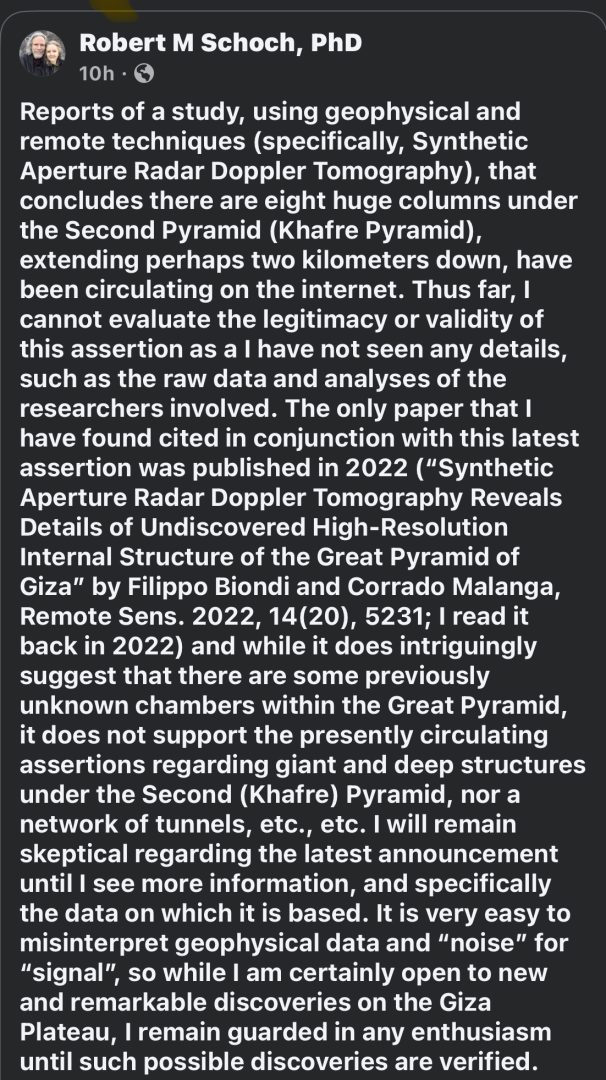
Robert Schoch, a geologist and author renowned for redating the Sphinx to a far earlier era. Schoch, no stranger to challenging mainstream Egyptology, has nonetheless called the Khafre scan scam “a bridge too far”. He questions the methodology behind Malanga and Biondi’s SAR Doppler Tomography. Schoch contrasts this with his own work, which relies on geological weathering and tangible evidence, not satellite data open to interpretive leaps. He warns that the Khafre pyramid fraud risks tainting alternative archaeology with “pseudoscientific fluff,” especially given the lack of peer-reviewed validation and Egypt’s rejection of the claims.
The Verdict: A House of Cards Falls
The Khafre scan scam ends here. Malanga and Biondi, overplayed SAR’s hand. Their 2022 Khufu study falters against muon truth; Khafre’s collapse follows. SAR maps surfaces, not depths: physics rules it so. Giza’s record, 1965 detectors, 2017 muons, 2023 GPR, show modest gains, not underworlds. Real mysteries linger in Giza’s stone, but they await true science, not scams clad in press releases and fake visuals. The Khafre pyramid fraud proves one truth: extraordinary claims need evidence, and this has none. Giza stands tall; the lie falls flat.

